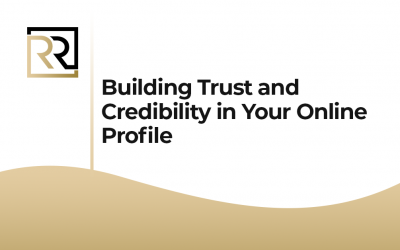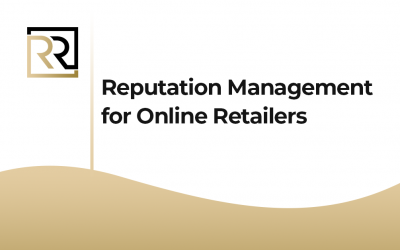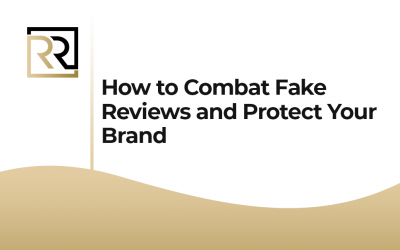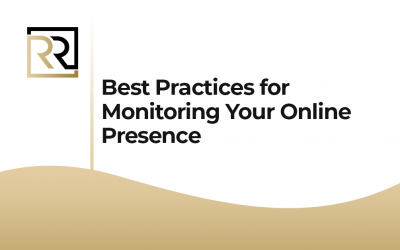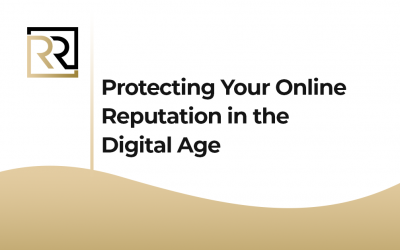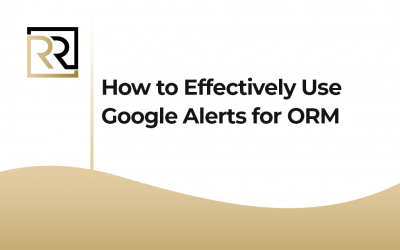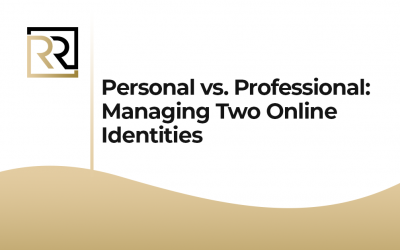Protecting Your Personal Information Online – A Comprehensive Guide
In an age where our lives are increasingly intertwined with the digital realm, protecting your personal information online has become more crucial than ever. Furthermore, from financial transactions to social interactions, a plethora of activities occur in the virtual space, making it imperative to fortify your digital presence. Therefore, this article provides a comprehensive guide on the best practices, tools, and strategies to safeguard your personal information and navigate the online world securely.
Understanding the Importance of Online Privacy – Protecting Your Personal Information
- Rising Cybersecurity Threats: Furthermore, with the proliferation of online activities, cyber threats have become more sophisticated. Thus, malicious actors constantly seek to exploit vulnerabilities to gain unauthorized access to personal information, emphasizing the need for heightened online privacy measures.
- Data as a Valuable Asset: Hence, personal information is a valuable commodity in the digital landscape. From financial details to personal preferences, this data is sought after by advertisers, cybercriminals, and even certain online platforms. Therefore, protecting your personal information is essential for maintaining control over your digital identity.
Strengthening Password Security
- Complexity and Uniqueness: Create strong, unique passwords for each online account. Therefore, use a combination of uppercase and lowercase letters, numbers, and symbols. Also, avoid easily guessable information, such as birthdays or names, and consider using a passphrase for added security.
- Password Managers: Implement a reliable password manager to generate and store complex passwords securely. Besides, password managers streamline the login process and help ensure that you are not using the same password across multiple accounts. This is reducing the risk of a widespread security breach.
Implementing Two-Factor Authentication (2FA)
- Enhanced Security Layers: Enable two-factor authentication (2FA) wherever possible. Ultimately, this adds an additional layer of security by requiring a second form of verification, such as a unique code sent to your mobile device, in addition to your password.
- Authentication Apps: Also, opt for authentication apps rather than text messages for 2FA. Apps like Google Authenticator or Authy provide a more secure method of generating authentication codes and reduce the risk associated with SIM card swapping.
Safeguarding Personal Devices – Protecting Your Personal Information
- Device Encryption: Moreover, encrypt your personal devices to protect the data stored on them. Encryption converts your data into unreadable code, making it significantly more challenging for unauthorized individuals to access your information even if they gain physical access to your device.
- Regular Software Updates: Also, keep your operating system, antivirus software, and applications up to date with the latest security patches. Furthermore, regular updates address vulnerabilities, ensuring that your devices are better protected against potential threats.
Exercising Caution with Emails and Messages
- Phishing Awareness: Firstly, be vigilant against phishing attempts. Thus, avoid clicking on suspicious links or providing personal information in response to unsolicited emails or messages. Further, legitimate organizations will not request sensitive information through unsecured channels.
- Email Encryption: Also, consider using encrypted email services for sensitive communications. Encrypted emails add an extra layer of protection, ensuring that only the intended recipient can access the content of the message.
Managing Social Media Privacy Settings
- Limiting Public Visibility: Additionally, adjust your social media privacy settings to limit the visibility of your personal information. Further, restrict who can view your profile, posts, and personal details. Regularly review and update these settings as platforms introduce new features.
- Mindful Sharing: Exercise caution when sharing personal information on social media. Avoid disclosing sensitive details, such as your address or phone number, in public posts. Moreover, be mindful of the potential consequences of sharing personal information, even with seemingly trustworthy connections.
Protecting Your Personal Information – Utilizing Virtual Private Networks (VPNs)
- Secure Data Transmission: Consider using a Virtual Private Network (VPN) to encrypt your internet connection, especially when using public Wi-Fi networks. Thus, VPNs provide a secure tunnel for data transmission, preventing potential eavesdropping and safeguarding your personal information.
- Choosing Reputable VPN Providers: Select a reputable VPN service with a track record of prioritizing user privacy. Further, research and choose providers that adhere to a strict no-logs policy, ensuring that your online activities remain private.
Regularly Monitoring Financial Accounts
- Frequent Account Checks: Firstly, routinely monitor your financial accounts for any unauthorized or suspicious activities. Regularly checking account statements allows you to identify and address potential security breaches promptly.
- Setting Alerts: Also, enable account alerts and notifications for any unusual activity. Thus, most financial institutions offer customizable alert settings that notify you of transactions exceeding a specified amount or other suspicious account behavior.
Being Wary of Public Wi-Fi Risks
- Avoiding Sensitive Transactions: Refrain from conducting sensitive transactions, such as online banking or shopping, on public Wi-Fi networks. These networks are susceptible to hacking, and your personal information may be compromised.
- Using Virtual Private Networks (VPNs): If using public Wi-Fi is unavoidable, connect to it through a VPN. A VPN encrypts your internet connection, minimizing the risk of unauthorized access to your personal information.
Protecting Against Identity Theft
- Monitoring Credit Reports: Regularly check your credit reports for any unusual activity or signs of identity theft. Moreover, reporting discrepancies promptly allows you to take corrective action before significant damage occurs.
- Freezing Credit: Consider freezing your credit to prevent unauthorized access. Thus, credit freezes restrict access to your credit report, making it challenging for identity thieves to open new accounts in your name.
Educating Yourself on Online Scams
- Staying Informed: Stay informed about common online scams and tactics employed by cybercriminals. Awareness is a powerful defense, and recognizing potential threats enhances your ability to protect your personal information.
- Educating Others: Share information about online scams with friends and family. Thus, by collectively raising awareness, you contribute to a safer online environment for everyone.
Utilizing Privacy-Focused Browsers and Search Engines
- Opting for Privacy-Focused Platforms: Choose browsers and search engines that prioritize user privacy. Also, platforms like DuckDuckGo and Brave Browser are designed to minimize data collection, providing a more private online experience.
- Configuring Browser Privacy Settings: Adjust your browser settings to enhance privacy. Furthermore, disable unnecessary cookies, block third-party trackers, and regularly clear your browsing history to reduce the digital footprint left behind.
Conclusion: Protecting Your Personal Information Online
Safeguarding your personal information online requires a proactive and multifaceted approach. By implementing strong password practices, utilizing two-factor authentication, securing personal devices, and exercising caution in digital interactions, you can fortify your digital fortress against potential threats. Further, stay informed about evolving cybersecurity risks, adopt privacy-focused tools, and regularly review and update your security measures. Therefore, in a landscape where the digital and physical worlds converge, empowering yourself with the knowledge and tools to protect your personal information is paramount for a secure and confident online experience, also, taking care of corporate reputation management.
Services
Our Services
Search Engine Content Removal
Social Media Content Removal
Positive Content Creation
Online Reviews Optimization
Search Results Optimization
Learn
Our Blog
Building Trust and Credibility in Your Online Profile
Building Trust and Credibility in Your Online Profile Further, in the digital age, establishing trust and credibility in your online profile is paramount for personal and professional...
Reputation Management for Online Retailers
Reputation Management for Online Retailers Further, in the fast-paced world of e-commerce, building and maintaining a positive online reputation is paramount to success. Thus, with countless...
How to Combat Fake Reviews and Protect Your Brand
How to Combat Fake Reviews and Protect Your Brand Wondering how to Combat Fake Reviews? In general, in the digital age, online reviews wield tremendous influence over consumer purchasing...
Best Practices for Monitoring Your Online Presence
Monitoring Online Presence In today's hyperconnected world, monitoring online presence plays a pivotal role in shaping your personal and professional reputation. Starting from social media...
The Connection Between SEO and Online Reputation
SEO and Online Reputation Further, in the digital realm, where visibility and credibility reign supreme, the relationship between search engine optimization (SEO) and online reputation...
Protecting Your Online Reputation in the Digital Age
Protecting Your Online Reputation In an era dominated by digital interactions and virtual connections, protecting your online reputation holds immense significance. Whether you're an...
The Power of Positive Online Branding for Entrepreneurs
The Power of Positive Online Branding for Entrepreneurs The Power of Positive Online Branding, in the dynamic world of entrepreneurship, establishing a strong online brand presence is not...
How to Effectively Use Google Alerts for ORM
How to Effectively Use Google Alerts for ORM Use Google Alerts for ORM, in today's digital landscape, maintaining a positive online reputation is essential for individuals and businesses...
Personal vs. Professional: Managing Two Online Identities
Online Identities - Navigating Personal and Professional Spheres in the Digital Realm In the digital age, where our lives seamlessly intertwine with online platforms, the question of managing...



